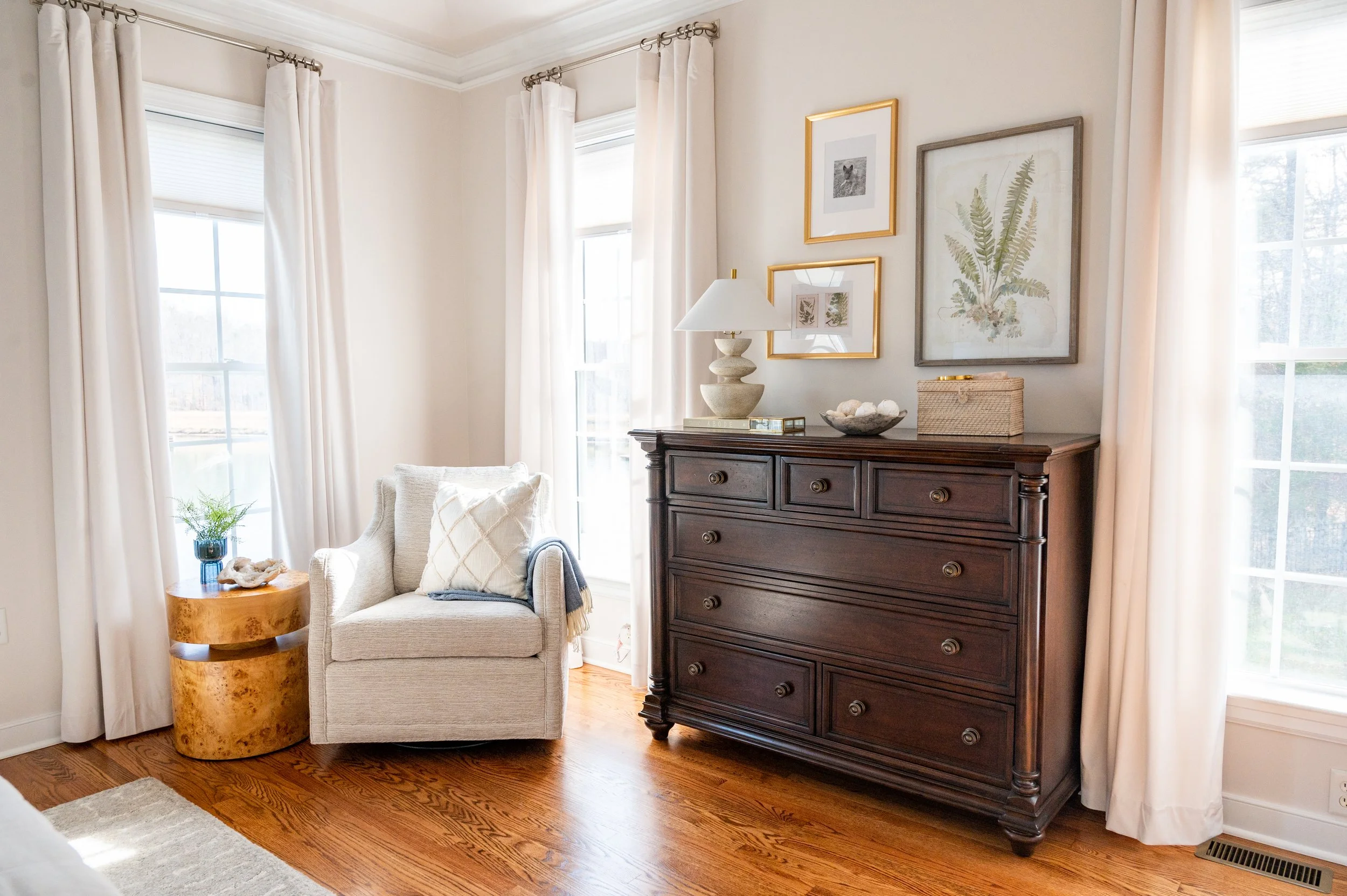Designing for the Everyday: 5 Ways to Make Routine Feel Restorative
At CAD, we believe your home should support your life—not complicate it. The way a space feels on a random Tuesday morning matters. And when your daily routines are backed by thoughtful, intentional design, the whole day just flows better. Here are five simple ways to make your everyday feel a little less hectic and a lot more peaceful:
1. Light with Intention
Lighting isn’t just functional—it sets the mood. Instead of relying on a single overhead fixture, try layering your light: overhead for utility, task for focus, and ambient for warmth. Dim the light over the dining table for a more intimate feel, keep a soft-glow lamp on your nightstand for a gentle wind-down, or add under-cabinet lighting in the kitchen for a calming prep space. Your lighting should work with your rhythm, not against it.
2. Create Quiet Corners
Even in a busy household, it's possible to carve out little moments of peace. (Think: a cozy chair by the window, a reading nook with a throw blanket, or a quiet bench by the door with a candle and a good book nearby.) It doesn’t have to be big—it just has to be intentional. These small, designated spaces remind us to slow down and give ourselves permission to pause.
3. Drop Zones That Actually Work
The entryway is usually where the chaos starts—bags, shoes, keys, mail... all of it. But a few smart design tweaks can make a world of difference. Closed storage for visual calm. Baskets or bins for quick toss-ins. Hooks at kid-level so they can manage their stuff. When everything has a home, you don’t have to think twice—and mornings feel a little less like a scramble.
4. Soften It With Color
Color affects how a room feels more than we sometimes realize. For high-use areas, lean into tones that calm instead of stimulate. Warm whites, sage greens, soft blues, earthy neutrals—they help your space feel grounded and easy to be in. You don’t need to repaint your whole house, either. Sometimes it’s as simple as swapping out a bold pillow or adding a soft throw.
5. Build in "Off Time"
Good design can actually help you unplug. Whether it’s a no-tech zone in your bedroom, a designated space for wind-down routines, or just a dining area that encourages connection, these subtle design decisions help create boundaries between on and off. Rest doesn’t happen by accident. Sometimes we need our homes to make it easier to shift gears.






